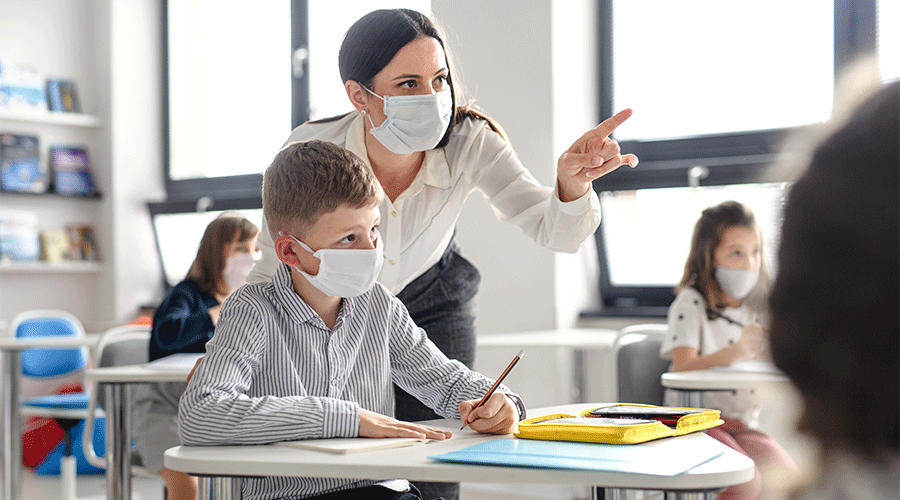As K-12 schools, colleges and universities open nationwide and many commercial offices continue bringing back workers to offices, the U.S. Centers for Disease Control and Prevention (CDC) has announced updated guidelines on COVID-19. Compared to the more rigid guidance created early in the pandemic, the new guidance prioritizes lowering the risk of severe disease and places the responsibility for assessing risks on individuals, rather than businesses and institutions.
One change in particular affects schools. In the statement, CDC is ending its recommendation that schools do routine daily testing, unless needed in certain situations: “Screening testing of asymptomatic people without known exposures will no longer be recommended in most community settings.”
Related Content: What Monkeypox Means for Environmental Services
The guidance also ends the recommendation that a person quarantine if they come into close contact with an infected individual. Instead, it recommends that “instead of quarantining if you were exposed to COVID-19, you wear a high-quality mask for 10 days and get tested on day 5.”
The CDC also reduced the emphasis on social distancing, announcing that individuals no longer need to stay at least 6 feet away from others in public spaces: “... physical distance is just one component of how to protect yourself and others. It is important to consider the risk in a particular setting, including local COVID-19 Community Levels and the important role of ventilation, when assessing the need to maintain physical distance.”

 UF Health Hospitals Rely on Green Globes to Realize Their Full Potential
UF Health Hospitals Rely on Green Globes to Realize Their Full Potential How Healthcare Facilities Can Be Truly Disaster-Resilient
How Healthcare Facilities Can Be Truly Disaster-Resilient TriasMD Breaks Ground on DISC Surgery Center for San Fernando Valley
TriasMD Breaks Ground on DISC Surgery Center for San Fernando Valley Bigfork Valley Hospital Falls Victim to Data Breach
Bigfork Valley Hospital Falls Victim to Data Breach AI-Driven Facilities: Strategic Planning and Cost Management
AI-Driven Facilities: Strategic Planning and Cost Management